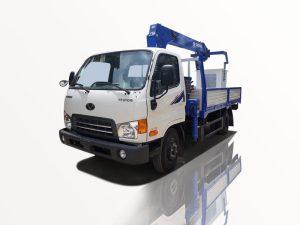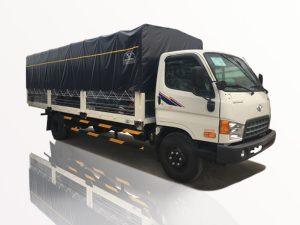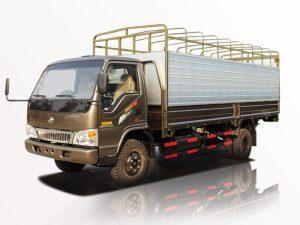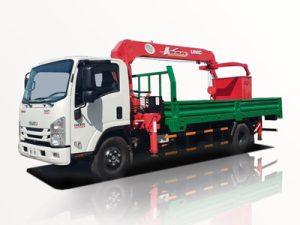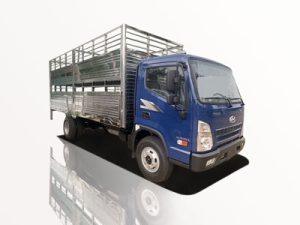Monday to Saturday - 8:00 -17:30
How Much Fuel Does a Fuel Tanker Carry? A Comprehensive Guide
Introduction
Fuel tankers are essential for the transportation of various types of fuels, including gasoline, diesel, jet fuel, and more. Understanding how much fuel these tankers can carry is crucial for industries reliant on fuel supply, logistics management, and environmental considerations. This article delves into the details of fuel tankers, including their capacity, types, operational uses, and important safety measures.
Types of Fuel Tankers
Fuel tankers come in various types, each designed to serve specific needs based on fuel type, transportation efficiency, and safety standards.
1. Road Tankers
Road tankers are commonly used for short to medium distances. They typically have a capacity ranging from 5,000 to 11,000 gallons (approximately 18,900 to 41,600 liters). Their size allows for quick delivery to gas stations, industrial sites, and residential areas.
2. Rail Tankers
Rail tankers are used for transporting fuel over long distances by train. They generally carry between 10,000 to 30,000 gallons (approximately 38,000 to 113,500 liters) of fuel, making them a more efficient option for mass fuel transport compared to road tankers.
3. Marine Tankers
Marine tankers, or oil tankers, are designed for transporting large volumes of crude oil or refined products across seas and oceans. These vessels can range from 50,000 to over 500,000 deadweight tons (DWT), translating to millions of gallons of fuel capacity.
Capacity Overview
Understanding the carrying capacity of various fuel tankers is essential for logistics and supply chain management. Below is a table summarizing the typical capacities of different types of fuel tankers:
| Type of Tanker | Capacity (Gallons) | Capacity (Liters) |
|---|---|---|
| Road Tankers | 5,000 – 11,000 | 18,900 – 41,600 |
| Rail Tankers | 10,000 – 30,000 | 38,000 – 113,500 |
| Marine Tankers | 50,000 – 500,000+ | 189,300 – 1,893,000+ |
| Petroleum Barges | 20,000 – 50,000 | 75,700 – 189,300 |
Factors Affecting Fuel Tanker Capacity
Several factors influence how much fuel a tanker can carry. These include:
1. Design and Materials
The design of a fuel tanker, including its shape and materials, impacts its overall capacity. Tankers must also comply with safety regulations that can restrict the volume of fuel carried.
2. Type of Fuel
The viscosity and density of the fuel can determine how much space it occupies in the tanker. Lighter fuels take up more volume compared to denser ones, affecting overall capacity.
3. Regulatory Compliance
Fuel tankers must adhere to various regulations and safety standards that dictate maximum allowable capacities, especially concerning environmental and safety protocols.
Transportation Efficiency Factors
In addition to capacity, several factors contribute to the overall efficiency of fuel tanker transportation:
1. Load Weight Limitations
Every tanker has a maximum load weight, which depends on the materials used in its construction and the vehicle’s design. Exceeding these limits can lead to legal issues and increased safety risks.
2. Fuel Surcharges
The cost of fuel transportation often fluctuates due to surcharges based on current fuel prices, impacting overall logistics budgets.
3. Distance and Route Planning
Optimal route planning can significantly reduce transportation costs, time, and environmental impact, allowing tankers to maximize their fuel-carrying capacity.
Safety and Environmental Considerations
Transporting fuel comes with inherent risks, highlighting the need for stringent safety measures.
1. Spill Prevention
Innovative materials and designs in tankers aim to minimize the risk of spills. Regular inspections and maintenance are crucial for safety.
2. Emergency Protocols
Fuel tankers must be equipped with detailed emergency protocols to address accidents or leaks swiftly, ensuring both safety and environmental protection.
3. Environmental Regulations
Regulatory bodies impose guidelines that tankers must follow to reduce emissions and protect ecosystems during transportation.
Operational Uses of Fuel Tankers
Fuel tankers serve various sectors, including:
1. Retail Fuel Distribution
Gas stations depend on road tankers to keep their fuel supplies replenished, typically receiving deliveries several times a week.
2. Construction Industry
Construction companies rely on fuel tankers for diesel to power heavy machinery and vehicles on-site, ensuring efficient operations.
3. Agriculture Sector
Agricultural equipment also requires fuel deliveries, and tankers play a vital role in ensuring timely access to necessary fuels for farming activities.
Challenges in Fuel Transportation
The fuel transportation industry faces numerous challenges, including:
1. Regulatory Changes
Frequent changes in regulations can complicate logistics and require continuous adaptation from companies involved in fuel transportation.
2. Fuel Price Volatility
Rising fuel prices can impact logistics costs, ultimately affecting demand and profitability in the industry.
3. Public Perception
Environmental concerns related to the transportation of fossil fuels can influence public opinion and regulatory policies, shaping the industry’s future.
Future Trends in Fuel Tanking
The future of fuel tankers is likely to evolve in several significant ways:
1. Adoption of Alternative Fuels
As the world shifts toward renewable energy, there may be an increased demand for tankers designed for transporting alternative fuels such as biodiesel, ethanol, and hydrogen.
2. Technological Advancements
Innovations in fuel tanker design, monitoring systems, and logistics management tools could improve safety and efficiency significantly.
3. Enhanced Regulation Compliance
The increasing focus on environmental sustainability will likely lead to stricter regulations, pushing manufacturers to develop more eco-friendly tankers.
FAQs
1. How do you calculate the capacity of a fuel tanker?
The capacity is calculated based on the tanker’s design, internal volume, and regulatory limits. Manufacturers often provide this information based on standardized measurements.
2. What types of fuel can road tankers carry?
Road tankers can carry gasoline, diesel, biofuels, and other petroleum products. Special tankers may be required for hazardous materials.
3. Are there environmental regulations for fuel tankers?
Yes, fuel tankers must comply with various local and international environmental regulations aimed at minimizing spills, emissions, and other environmental impacts.
4. Why are marine tankers larger than road and rail tankers?
Marine tankers are designed for long-distance transportation over water and must carry larger volumes of fuel to be cost-effective, thereby necessitating a larger size.
5. What safety measures are implemented in fuel transportation?
Tankers are equipped with spill prevention systems, emergency response plans, and are subject to regular inspections to ensure they meet safety standards.
6. Can fuel tankers transport multiple types of fuel at once?
Yes, some road and rail tankers have multiple compartments that allow them to transport different types of fuel simultaneously, but this is subject to regulatory guidelines.


